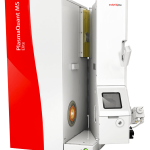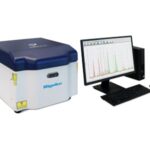MENUMENU
PlasmaQuant MS Series Lorem ipsum dolor sit amet, consectetur adipiscing elit. Ut elit tellus, luctus nec ullamcorper mattis, pulvinar dapibus leo. OVERVIEW | FEATURES | VIDEO | APPLICATIONS | ENQUIRE / CALL BACK Product Overview The PlasmaQuant MS range of instruments from Analytik Jena provides unparalleled sensitivity and speed, but with the lowest running costs of any ICP-MS instrument. With their flexibility and added features, the PlasmaQuant MS range is perfect for meeting both routine and complex analytical challenges with user-friendly software and simple maintenance. In the sections below we highlight some key features and applications of the PlasmaQuant MS…

The PlasmaQuant MS range of instruments from Analytik Jena provides unparalleled sensitivity and speed, but with the lowest running costs of any ICP-MS instrument. With their flexibility and added features, the PlasmaQuant MS range is perfect for meeting both routine and complex analytical challenges with user-friendly software and simple maintenance. In the sections below we highlight some key features and applications of the PlasmaQuant MS range, demonstrating why they are the currently the preferred choice for ICP-MS in research, commercial, and industrial laboratories. Further information is also available on the Analytik Jena website or contact SciMed today! Key features of the PlasmaQuant MS…

Description VIDEO Why Polarised optics? Application Description Second-generation Polarised Optics EDXRF from Rigaku.This New Generation instrument performs Quantitative and Qualitative Elemental Analysis What are the main features of the Rigaku NEX CGII? NEX CG II, performs elemental analysis of major, minor and trace elements from light elements – Na to heavy U. Measurements can be made of metals, glass and other solid matrices, powders of soils, geological matrices, polymers, pharmaceuticals and other powders, liquids, pastes, waste materials, thin films and coatings and any material that can be presented to the instrument in pre-defined cups or discs or any free form…

Description Key Features Application Description The RIGAKU NEX-CG is an ED(P)-XRF with ultra high performance. The (P) stands for Polarised X-ray optics. This particular X-ray optical configuration combined with a high performance detector has led to the highest performance benchtop X-ray spectrometer to date. The NEX-CG allows for high precision sample screening of unknown samples from sub ppm up to percentage levels. The NEX CG can be used for routine applications where a high level of performance is required. It ca also be used to screen totally unknown samples such waste samples, oild slurries and many other similar applications. Soils,…
Metals and ceramics are used in various fields of engineering endeavor including buildings, airplanes, automobiles, etc. In almost all of these applications the materials are polycrystalline and have a degree of texture, i.e. crystal orientation. The crystal orientation is typically derived as a result of materials processing stages such as forming and/or heat treatments. The crystal orientation can have a profound effect on thermal, electrical and mechanical properties. Hence analysis of the crystal orientation is crucial for controlling material properties. Crystal orientation can be determined from pole figures obtained by X-ray diffraction. Furthermore, from the analysis by the Crystallite Orientation…
Copper is one of the essential base metals in modern infrastructure. It is used for construction, electronics, machinery, automobile and marine vessel etc. in the form of electric cable and copper alloys. Copper ore mined as mainly sulfide ore is usually shipped as concentrate of 20 – 40% in copper content after processing at the plant near mine site. Copper concentrate contains a variety of impurities that are either valuable elements as byproducts, or harmful to quality in copper metal products and hazardous to the environment and human health. In modern copper deposits, ore grade of copper is decreasing while…
Waste materials are becoming more and more important as valuable feed materials for energy production, as fuels and recycled feed materials for the chemical industry. To ensure a trouble-free processing and high quality of the final products, the exact elemental composition has to be determined. In addition to heavy metals, carbon, hydrogen and sulfur, chlorine plays an important role. During processing, HCl can be formed and damage system components and contaminate costly catalysts. Under nonoptimal combustion conditions Cl compounds can influence the formation of extremely toxic dioxins. It’s therefore important to know the exact Cl content of the matrix being…